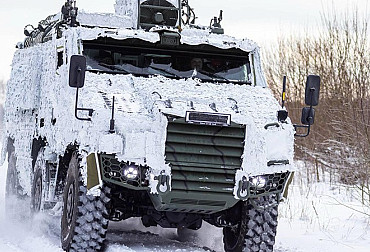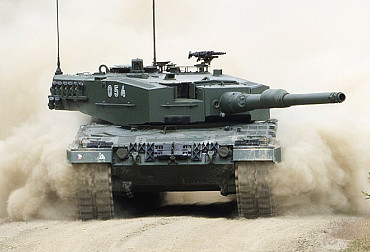Air Defence of the Czech Armed Forces: a shield (not only) against the threat of drones and missiles
The war in Ukraine has literally from the first moments brought intensive deployment of a wide range of more or less precisely guided weapons. Russia uses, for example, Iskander-M ballistic missiles, various types of cruise missiles (especially the Ch-101 type launched from the air or the Kalibr type launched from ships) or artillery rocket launchers. In September, a completely new threat was also added in the form of 'suicide' drones, which Russia acquired from Iran. Together with the combat activities of the Russian air force, this is a huge burden on Ukrainian air defences. The latter has performed remarkably well, given the situation, as it has not allowed the Russian air force to gain air superiority over the battlefield, has inflicted heavy losses on it and has also managed to defuse a significant number of missile and drone attacks. Despite this, however, Russian strikes are causing damage to Ukraine, and the Ukrainian air defence force could soon run into a shortage of missiles, which is at least partly addressed by the supply of modern anti-aircraft systems from NATO members. In any case, the war in Ukraine is also an extremely valuable source of lessons for Western countries, as Western armies (including the Czech one) have clearly neglected the air defence sector.
In the Cold War era, there was very heavy investment in air defence on both sides of the Iron Curtain, because, after all, they were still drawing on the Second World War. The latter clearly demonstrated the extreme importance of air power in direct support on the battlefield and in strategic raids on the enemy's rear. The logical response was thus the development of air defence for troops and the state, the latter of which is also commonly referred to as object-based air defence. Most often, a combination of gun and missile systems with various types of guidance was employed. After the end of the Cold War, however, Western countries generally began to reduce air defences, as conflict with an adversary with a strong air force was not expected. Considerable attention has been paid to missile defence, but short-range air defence (SHORAD) in particular has been largely neglected, as evidenced, for example, by the US military's current efforts to address this issue expeditiously. The approach of not only Russia and China, but also e.g. Israel or South Korea, contrasts strongly with this, as these countries have clearly not succumbed to the same conviction as the NATO countries and have continued to pay close attention to all layers of troop and object-based air defence.
The significant weakening of air defence also concerns the Army of the Czech Republic, which has 'inherited' a wide range of Soviet-origin air defence systems from the former Czechoslovak People's Army and the Army of the Czechoslovak People's Republic. However, the division of the federation already meant the de facto disappearance of the highest layer of air defence, as the powerful long-range S-300 system was retained by Slovakia. In the following years, the medium-range systems gradually left the service, leaving the Czech Army with only two mobile systems, namely the short to medium range 2K12 Kub and the very short range 9K35 Strela-10M2. The Strela-10M2 has recently been retired from active service and the Strela-2M portable complexes are now used only for training. The purchase of modern Swedish RBS-70 portable systems, which represent a means of defence for the shortest distances, has brought only a partial solution, but for several reasons they are not very suitable for the air defence of troops.
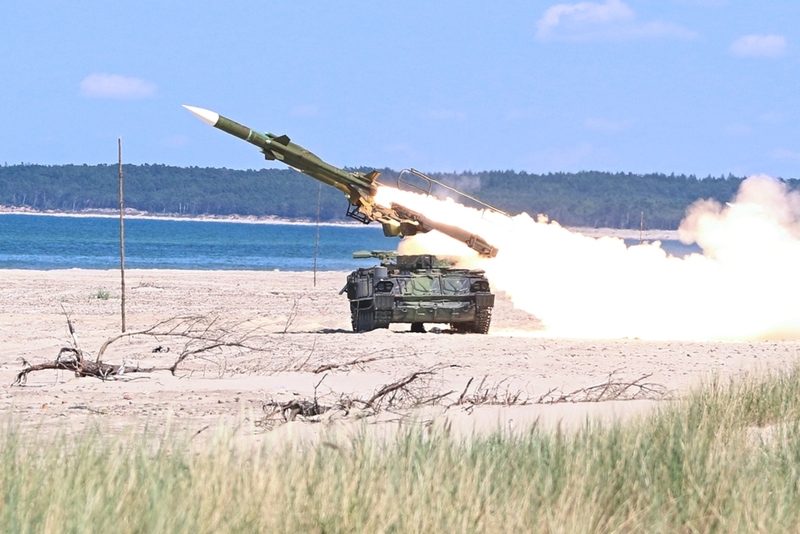 Picture: 2K12M KUB M anti-aircraft system in the service of the Czech Armed Forces | Ministry of Defence of the Czech Republic
Picture: 2K12M KUB M anti-aircraft system in the service of the Czech Armed Forces | Ministry of Defence of the Czech Republic
In the past, there has been repeated talk of upgrading the Kub systems, but this option has been delayed until it no longer makes practical sense. The only logical solution was to acquire a new SHORAD air defence system, and in September 2020, the Czech Army decided to acquire the Spyder system from the Israeli company Rafael. It is a technically advanced and combat-proven set, which uses derivatives of the high-end short- and medium-range Python-5 and I-Derby air-launched cruise missiles. They can also be fitted with rocket boosters for ground-launched launches, significantly increasing their long-range and altitude range. While the Python-5 uses infrared guidance in two wavebands, the I-Derby missile is guided to the target by its own radar. The Spyder system as a whole then uses the Elta EL/M-2084 radar, which is a great advantage for the Czech Army, as the same type is being introduced into its armament as a 3D surveillance radar of the MADR category, which will naturally simplify the integration of the Spyder system. In addition, the Czech company Retia is also involved in the production of these radars and all elements will use Tatra Force chassis, so this will be a significant contribution to the Czech defence industry.
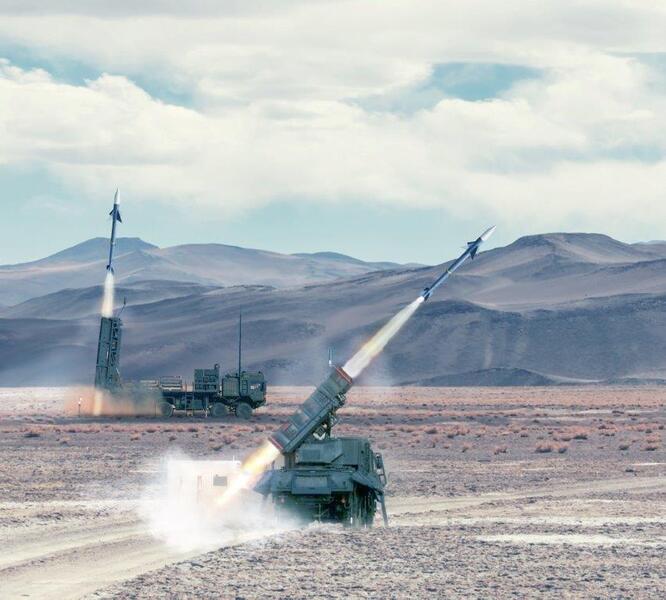 Picture: In September 2020, it was decided that the Czech Army will acquire the Spyder system from the Israeli company Rafael. It is a technically advanced and battle-tested kit that uses derivatives of the high-end short- and medium-range Python-5 and I-Derby air-launched cruise missiles. | Ministry of Defence of the Czech Republic
Picture: In September 2020, it was decided that the Czech Army will acquire the Spyder system from the Israeli company Rafael. It is a technically advanced and battle-tested kit that uses derivatives of the high-end short- and medium-range Python-5 and I-Derby air-launched cruise missiles. | Ministry of Defence of the Czech Republic
The Spyder anti-aircraft set is to provide mainly air defence of the state, or defence of some important objects, especially the capital, the largest military bases or nuclear power plants. Thanks to its concept and mounting on a Tatra chassis, it can offer high mobility, but of course it is not designed to provide effective air defence of troops or manoeuvre forces. For troop air defence, systems on different platforms are needed that match the forces they are intended to protect in terms of their robustness and off-road mobility. As a rule, therefore, these are systems mounted on wheeled or tracked armoured chassis. It should also be emphasised that the Army has ordered a high-end short to medium range system in the Spyder system, but that this can be further supplemented with additional components and capabilities. Even in its basic design, it can counter short-range ballistic missiles, but this capability can be further expanded.
Lessons learned from the war in Ukraine lead, among other things, to the conclusion that an integrated system must be built that covers all ranges and can cope with a wide range of threats. From this point of view, the Spyder system represents the middle layer of an object-based air defence in a conventional configuration. The choice of the Spyder system is a huge advantage in this sense, thanks to the EL/M-2084 radar already mentioned, since the same type is used by other Israeli air defence complexes, which could conveniently form the other necessary layers. In the case of short-range defence, it is the famous Iron Dome system, which was originally developed to destroy simple rockets fired by Palestinian and Lebanese militants. It is therefore a typical C-RAM (Counter Rockets, Artillery and Mortar), but later upgrades have significantly expanded its capabilities, so that today the Iron Dome can also be used effectively against unmanned aerial vehicles and other threats. Its absolutely extraordinary combat record has naturally led to a huge interest on the world market, where the system has already won several export successes.
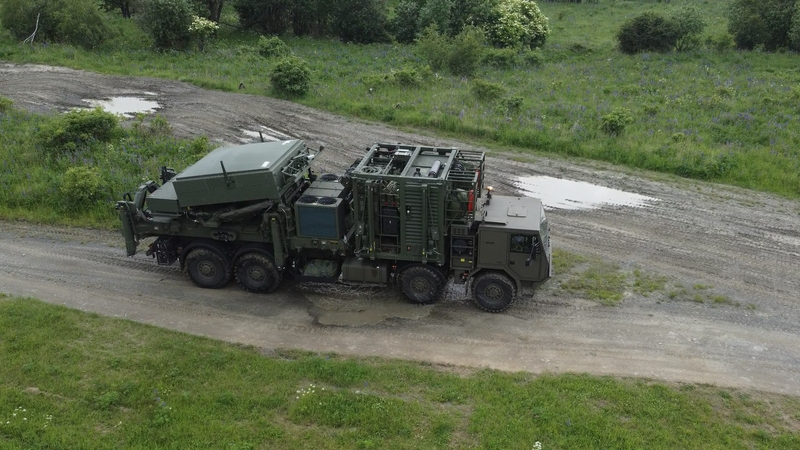 Picture: The Spyder system as a whole uses the Elta EL/M-2084 radar, which is a great advantage for the Czech Army, as the same type is being introduced into its armament as a 3D surveillance radar of the MADR category. | Cpt. Jiřina Polcrová
Picture: The Spyder system as a whole uses the Elta EL/M-2084 radar, which is a great advantage for the Czech Army, as the same type is being introduced into its armament as a 3D surveillance radar of the MADR category. | Cpt. Jiřina Polcrová
If the Iron Dome system could extend the Spyder's capabilities towards the lower layer of the imaginary triple layer of air defence, then for the upper layer there are even two systems to choose from, both of which again use the EL/M-2084 radar. One option is IAI's Barak MX suite, which includes several types of missiles, the most powerful of which offers a range of up to 150 km. The other option could be the David's Sling system (also made by Rafael as the Spyder), which was developed as a replacement for the US Patriot systems and uses Stunner missiles with a range of up to 250 km. In any case, both of these systems should also offer the ability to effectively destroy medium-range ballistic missiles. The range of these complexes alone suggests that a pair of batteries would be sufficient to cover the entire territory of the Czech Republic. In addition, of course, it would also be advisable to provide defence against the longest-range missiles, but this does not make much sense for a country the size of the Czech Republic on its own. It is therefore not surprising that the Czech Republic has joined the initiative of fifteen European countries led by Germany to build an international 'umbrella' for defence against ballistic missiles, which should include the Israeli Arrow 3 complex.
The Czech Army itself should therefore concentrate on creating a three-layered system that will ensure the protection of Czech territory and airspace against various types of threats ranging from cruise missiles to ballistic missiles to "suicide" drones. The combination of EL/M-2084 radars and high-end Israeli-made missile complexes is an ideal way to go, which can also significantly benefit Czech industry. As already mentioned above, the Czech company Retia is involved in the production of these radars, as there have been technological transfers from the Israeli side, which has licensed the production of gallium-nitride transmitter and receiver modules for these devices. The radars procured for the MADR function and all components of the Czech variant of the Spyder complex will use Tatra Force automotive chassis, and therefore this arrangement should be commonplace in the case of the acquisition of other Israeli air defence systems. Last but not least, the Czech Army and industry will be able to benefit from the extensive experience that Israeli weapons of this category have already gained in the world.
However, the task certainly does not end with the establishment of an effective national air defence system, as attention must also be paid to the air defence of the troops. The current RBS-70 systems can be used for this task only to a limited extent. They use laser beam guidance, which is virtually impossible to jam, but is dependent on meteorological conditions and requires tracking the target until it is hit. It is therefore not a 'fire and forget' system. The Czech Army currently has only a portable or transportable version, which is transported using trucks, but it requires deployment for combat deployment. Firing on the move is not possible, and trucks are obviously not ideal platforms in terms of their armour protection and terrain mobility if such a system is to provide protection for tank and mechanised forces. The experience of the war in Ukraine and other conflicts convincingly demonstrates that such protection should be a priority, as the rapid proliferation and qualitative improvement of unmanned vehicles are among the most serious threats to ground troops today.
The Czech Army envisages a total of three armoured platforms that can be imagined as suitable for the installation of air defence systems for troops at very short range. The first is the proven eight-wheeled Pandur II CZ combat vehicle, which will soon be joined by the six-wheeled TITUS armoured personnel carrier and eventually by the new CV90 MkIV infantry fighting vehicle. At this point, we can mention the fact that current combat vehicles on wheeled and tracked chassis often already have turrets with rapid-fire guns that can also fire programmable three-shot ammunition, which can be highly effective especially against small drones. It is therefore expected or required that the Czech version of the CV90 MkIV will also have this capability and that the new remote-controlled weapon stations that will soon be acquired to rearm the Pandur II wheeled vehicles will also offer it. Stations providing this capability can, of course, also be placed on TITUS armoured vehicles. At the same time, however, it should be noted that this capability of the turrets or weapon stations is rather complementary, or it is a kind of 'last resort', since the air defence of troops must be dealt with in a different way in a systemic manner.
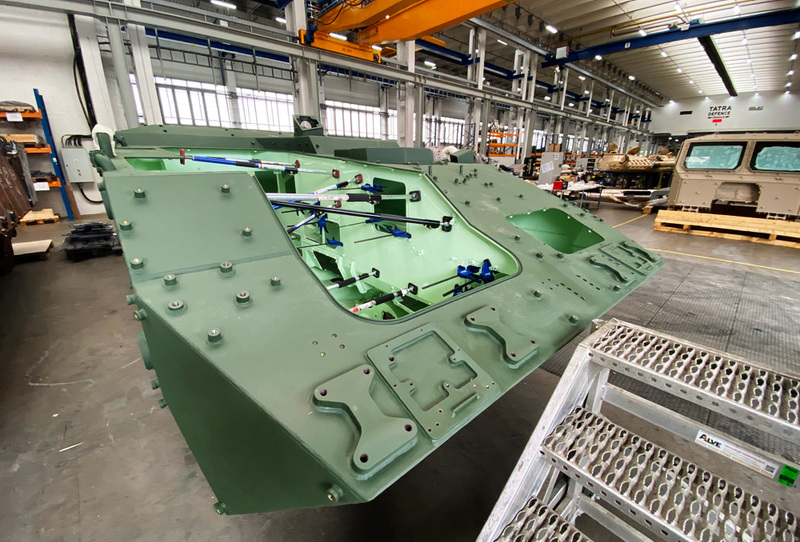 Picture: The Czech Army envisages a total of three armoured platforms that can be imagined as suitable for the installation of air defence systems for troops at very short range. The first is the proven eight-wheeled Pandur II CZ combat vehicle (pictured), which will soon be joined by the six-wheeled TITUS armoured personnel carrier and eventually the new CV90 MkIV infantry fighting vehicle. | Michal Pivoňka / CZ DEFENCE
Picture: The Czech Army envisages a total of three armoured platforms that can be imagined as suitable for the installation of air defence systems for troops at very short range. The first is the proven eight-wheeled Pandur II CZ combat vehicle (pictured), which will soon be joined by the six-wheeled TITUS armoured personnel carrier and eventually the new CV90 MkIV infantry fighting vehicle. | Michal Pivoňka / CZ DEFENCE
Special anti-aircraft complexes must be placed on wheeled and tracked armoured platforms to ensure the elimination of air threats at a distance of several kilometres with greater reliability. There is a wide range of cannon or missile systems on the market that could be considered, and there are also means based on completely different principles, in particular directional jammers and laser weapons. Experience in Ukraine shows that among the most effective means to combat "suicide" drones are self-propelled anti-aircraft guns with optical and radar fire control, especially the German Gepard or the older Soviet ZSU-23-4 Shilka type. Complexes of this category should therefore also be placed on Pandur II (a)or CV90 MkIV platforms. A possible example is the Skyranger system, which comes from the German Rheinmetall armaments company and follows the commercially highly successful Skyguard and Skyshield complexes developed by the famous Swiss company Oerlikon Contraves (now part of Rheinmetall). The contemporary Skyranger type is designed as a rotating turret for a variety of chassis platforms and also allows the firing of extremely effective AHEAD programmable ammunition.
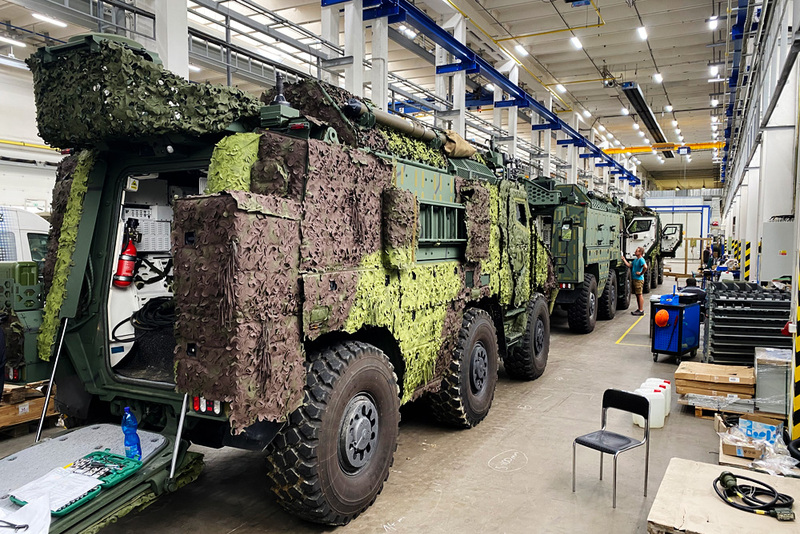 Picture: TITUS armoured vehicles for the Czech Army | Michal Pivoňka / CZ DEFENCE
Picture: TITUS armoured vehicles for the Czech Army | Michal Pivoňka / CZ DEFENCE
In the field of missile systems, one can build on the fact that the Czech Army has already introduced the RBS-70 type. As explained, its current version is not well suited for the purpose of air defence of troops, but Saab Bofors Dynamics also offers a version with multiple launchers for mounting on vehicles. The interception of more distant targets for the RBS-70 systems in the Czech Army is now provided by the ReVISOR short-range mobile radar, the current version of which is designed as a towed trailer. If the RBS-70 system were to be installed on a larger armoured platform, e.g. on a Pandur II or TITUS vehicle, the ReVISOR radar could also be mounted on the same vehicle. This would result in a fully autonomous anti-aircraft system that would also allow combat operations to be conducted while moving. If, however, the view prevails that another missile system (probably one with a "fire and forget" capability) is better suited for troop air defence, there is a wide range of types to choose from. The Polish Piorun kit, which boasts extremely impressive results from Ukraine, is a good example. Another alternative could be the KP-SAM system (also known as Shingung or Chiron) from South Korea.
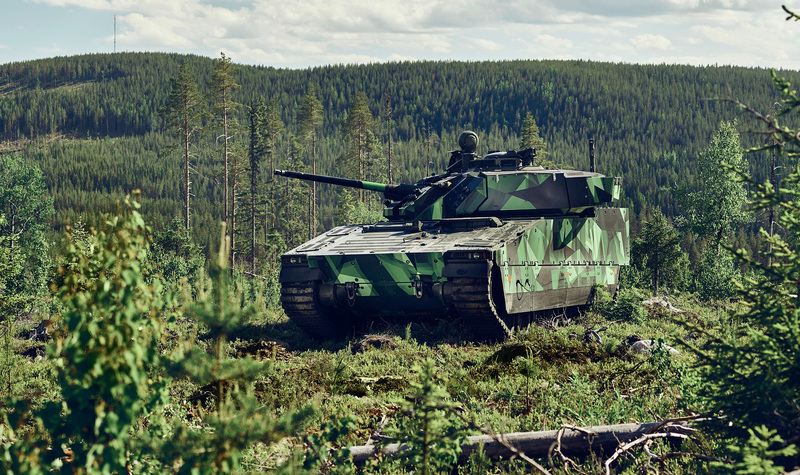 Picture: The CV90 MkIV tracked vehicle may also serve as a future platform for special anti-aircraft complexes | BAE Systems
Picture: The CV90 MkIV tracked vehicle may also serve as a future platform for special anti-aircraft complexes | BAE Systems
Cannon and missile air defence systems of troops are designed to defend against a wide range of threats, but there are also special means to protect against drones. Such systems typically include small but advanced radars for early detection of small drones, various optical and infrared sensors for tracking them, and finally directional microwave jammers for eliminating them. These jammers usually interfere with the bands used for drone control signals (2.4 GHz and 5.8 GHz) as well as with the frequencies of satellite navigation signals (GPS/NAVSTAR and GLONASS). It is worth pointing out here that the Czech company Retia produces the ReGuard radar, which is optimised, among other things, for drone tracking, and that other Czech companies also offer the other components mentioned, i.e. optical and infrared sensors and directional jammers. It would therefore be possible to construct a purely Czech integrated complex for the elimination of small drones and then place it on a suitable platform, e.g. a Pandur II or TITUS vehicle. After all, this would not be unusual, as the US Army already operates similarly equipped Stryker armoured personnel carriers. Prospectively, this system could also be complemented by a laser that would disable the drones' optical sensors and, with higher power, could handle their physical destruction.
Finally, one more important principle should be highlighted that should be consistently applied in building both object and troop air defenses. These systems should be designed to be both fully integrated and open. Thus, there must be reliable and secure interconnections between all elements to achieve greater synergistic effectiveness, whereas an open architecture allows for the addition of new elements. The nature of aerial threats is always changing and evolving, as the example of Ukraine, where high numbers of 'suicide' drones have begun to appear, demonstrates once again. Evolving threats must inevitably be met by the development of new countermeasures, ideally, of course, in such a way that they can be integrated into existing systems. Israel is a good example of this, as the EL/M-2084 universal radar uses several systems that are technically very different, but can be easily linked by the same radar. For the Czech Army, it is therefore the basis of the national air defence system, which can maintain its high efficiency for a long time.















